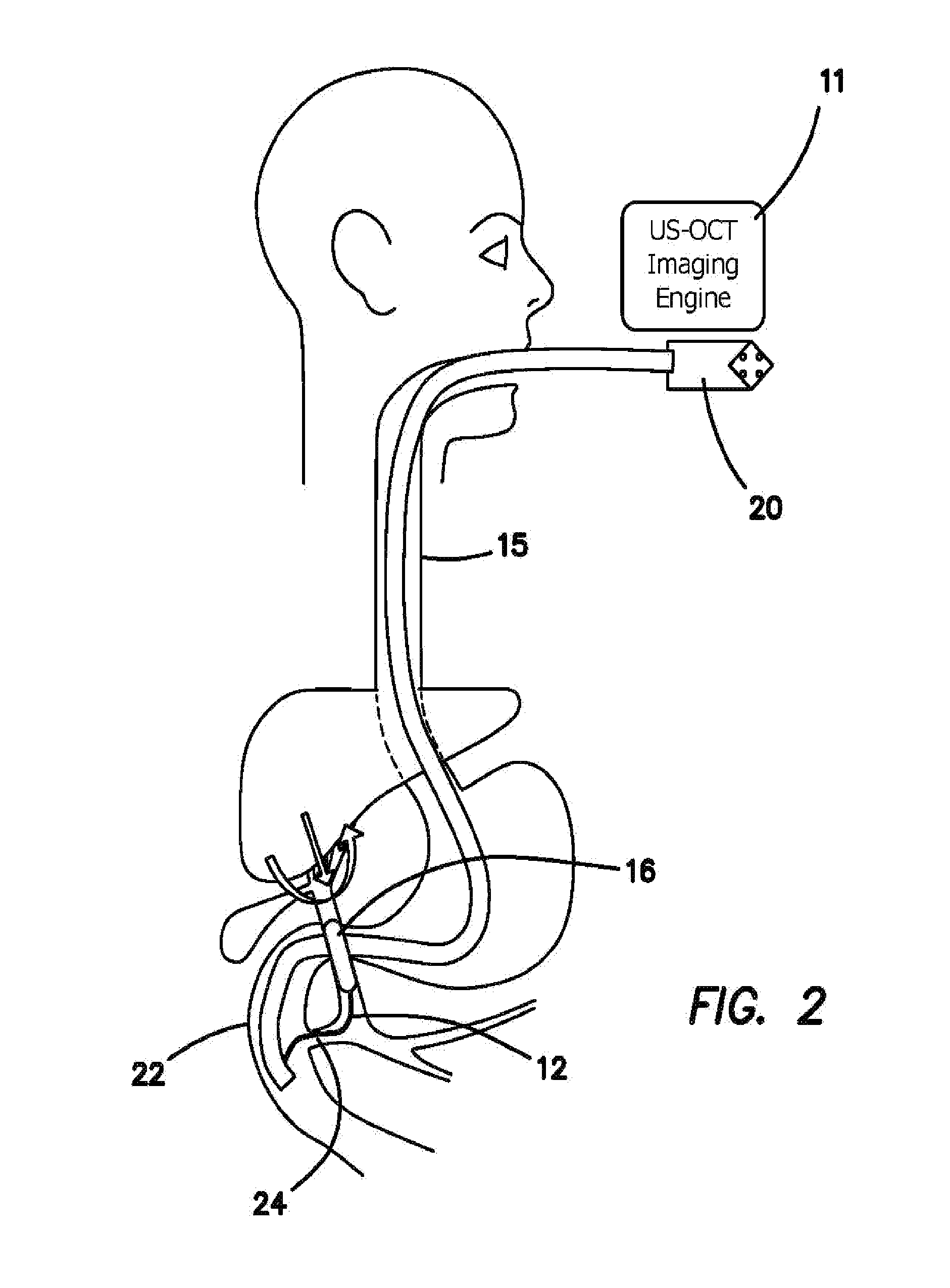Integrated Ultrasound, OCT, PA and/or Florescence Imaging Endoscope for Diagnosing Cancers in Gastrointestinal, Respiratory, and Urogenital Tracts
a cancer and endoscope technology, applied in the field of endoscopic probes, can solve the problems of poor prognosis, crude approach, invasiveness and harm to patients, and exacerbate the problem of early detection of dysplasia in the gut, etc., and achieve the effect of poor prognosis
- Summary
- Abstract
- Description
- Claims
- Application Information
AI Technical Summary
Benefits of technology
Problems solved by technology
Method used
Image
Examples
Embodiment Construction
[0045]Imaging System and Catheter Design
[0046]What is illustrated in the various embodiments of the invention includes a device 10 which is a minimally invasive interventional imaging device 10 with the ability to take a tissue biopsy from a location that is visible on the imaging system. The purpose of device 10 is to enable the physician: to visualize the tissue he or she is about to biopsy with the imaging catheter 12, and simultaneously take a tissue biopsy with the same device 10. The additional imaging information increases the diagnostic accuracy of the tissue biopsy by allowing the physician to first visualize the tissue in the bile duct which he or she deems suspicious and then take a biopsy of that, specific target rather than merely scraping cells off only the inner lining of the bile duct without any indication of where a lesion might be.
[0047]The imaging system of device 10 integrates at least two or more imaging modalities: an ultrasound, an OCT, a PA and / or a floresce...
PUM
 Login to View More
Login to View More Abstract
Description
Claims
Application Information
 Login to View More
Login to View More - R&D
- Intellectual Property
- Life Sciences
- Materials
- Tech Scout
- Unparalleled Data Quality
- Higher Quality Content
- 60% Fewer Hallucinations
Browse by: Latest US Patents, China's latest patents, Technical Efficacy Thesaurus, Application Domain, Technology Topic, Popular Technical Reports.
© 2025 PatSnap. All rights reserved.Legal|Privacy policy|Modern Slavery Act Transparency Statement|Sitemap|About US| Contact US: help@patsnap.com



